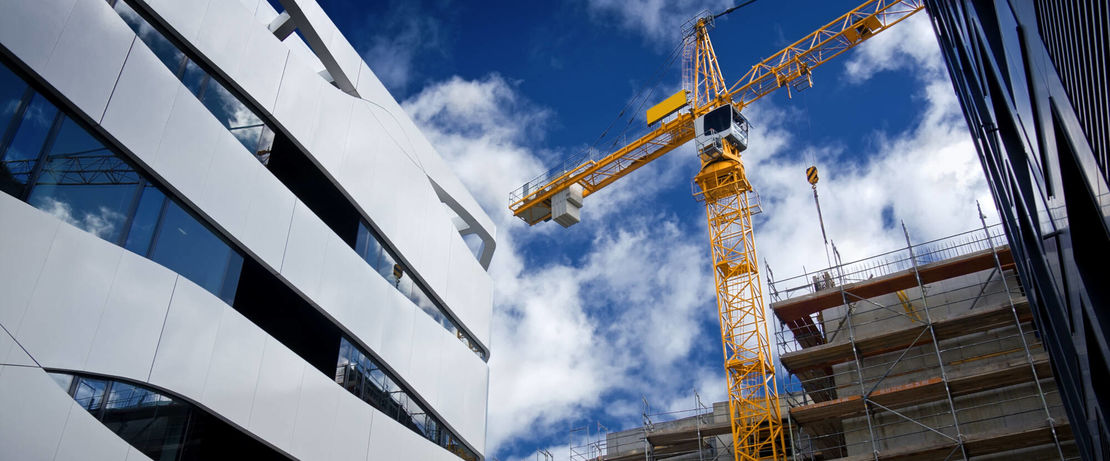
Our Markets
Construction
Products from Evonik protect exterior building surfaces against graffiti and damage caused by moisture - reliably and lastingly.
The broad range of building protection products provides an ideal, long-lasting solution for any mineral-based substrate such as concrete, sandstone, lime-sand bricks, granite, marble, clay bricks, or render. New structures, such as bridges or multilevel parking blocks benefit from these products in the same way as historical buildings: the product protects old walls from water damage. Hundreds of buildings have been protected with these products for more than 30 years - including the Berlin Victory Column, the Louvre in Paris and the Sydney Opera House.
Building protection products from Evonik can also be used when the concrete is being produced, which considerably prolongs the life of buildings. This preventive type of building protection is becoming increasingly popular for the long-term preservation of technical infrastructure, such as bridges, tunnels and sewage systems.
Special anchors are used to hold construction elements together in a stable manner. They even allow the heaviest structural components to be securely anchored in the drill hole without expansion pressure - as in the case of the recently restored Frauenkirche in Dresden, Germany. An important component of these anchors are rapidly curing synthetic resin mortars. These are based on methacrylate crosslinkers from Evonik, which ensure excellent mechanical bond strength and rapid curing of the resin.
Lightness, light and color variations are important when it comes to giving new impetus in modern architecture. PMMA molding compounds provide inspiration for all of these areas. PMMA is approved for overhead glazing, has passed the test for fall protection glazing and remains constantly bright and highly transparent over long periods of time. While its low weight enables the design of very fine structures, PMMA is still eleven times more resistant to breaking than glass.
For example, polyurethane precursors are used for insulation in the construction industry and modern tunnel construction would be unconceivable without PVC sealing membranes. Protecting the concrete pipes against water penetration is a key element for the long life of these (literally) groundbreaking structures.
Modern membrane architecture is conquering the world - in large airports, football stadiums and Olympic stadiums, for example. High-strength PVC roof membranes with extreme durability would not be possible without the plasticizer. It combines a high level of efficiency and permanence with a very wide temperature range in which it can be used.
PVC floor coverings are also setting standards in flooring applications, especially in highly stressed and busy public buildings and commercial areas, such as shopping malls, in terms of their combination of design, high load bearing capacity, and value for money. This is possible because of plasticizers, and special 2-component epoxy resins are used to prevent damage to industrial floors subject to high levels of stress.
When prefabricated concrete parts and foundations are being poured, the flow properties of the concrete play an important role, also with low outside temperatures. In concrete flow improvers, methacrylates from Evonik help adjust the flowability of the concrete mixture optimally.
Thermal insulation is another important subject - especially with respect to one of today's most important issues, resource efficiency. Growing environmental awareness and constantly rising energy prices are responsible for the strongly increasing demand for insulation materials. Good insulation can help save heating costs in new buildings, but also in existing buildings. Polyurethane foam insulation boards considerably reduce heat losses through the roof and walls. It is the cell structure of the polyurethane foam that is responsible for its good insulation properties. Polyurethane additives from Evonik are essential additives without many polyurethane foams could not be produced. They also have a big influence on the cell structure and allow insulation properties to be optimized.
